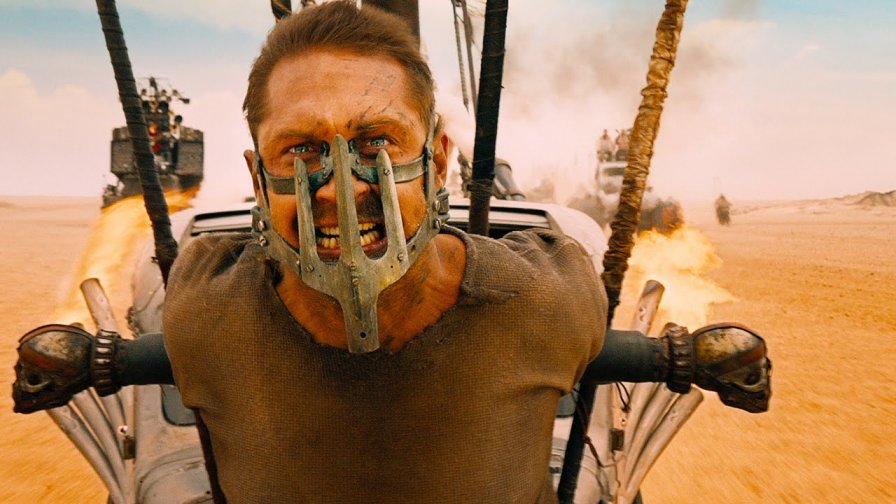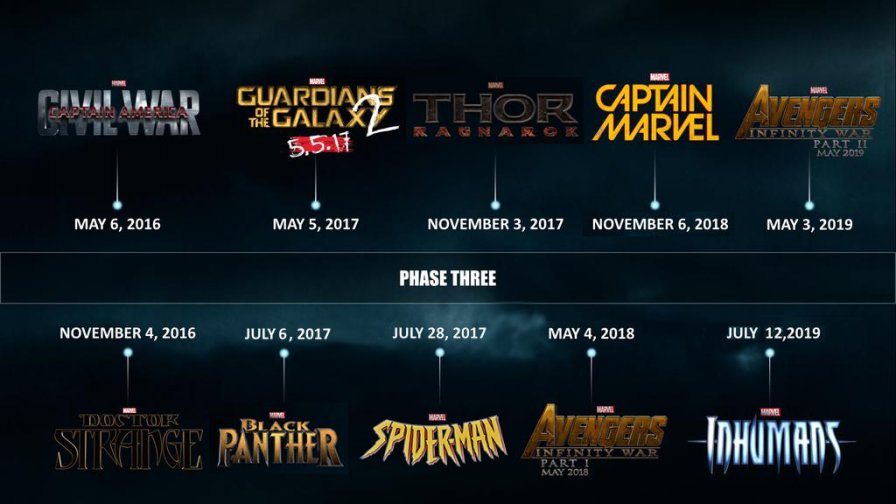Welcome to Screen Week! Join us as we explore the films and TV shows that kept us staring at screens. More from this series
I imagine, for some, it’s blasphemous even to consider Episode VII a reboot in what was a saga that, for itself, always demanded (more) resolution. More unnerving to me is the delusion of choice that has conditioned fans into a dispassionate consumer criticality. This vigilance is most notorious for geek properties, which have the disciplined fanbases of a cult. They will defend a studio’s decision-making on a brand level, integrating an industrial and historical understanding of the property into their fandom. It’s an apology from viewers on behalf of the creatives for, say, the over-familiar plot structure of The Force Awakens, because everyone knows Disney had to regain the trust of Star Wars fans after the prequels. If there’s one thing Disney knows how to do best, it’s serving it up.
There’s a passive-aggressive sleight of hand in the studios’ fan service, with its increasingly telegraphed gestures toward controlling images from our childhood canon; it’s meant to suspend our attachments and prolong our fandom ad infinitum. There were so many appeals to cult memory this past year: When Age of Ultron comes to a screeching halt so Hulk can battle the new Iron Man suit wearing the newest Iron Man suit. Rocky coaching Adonis till he catches the chicken and running up the famous steps. That trip back to the Jurassic Park compound, replete with restarted Jeep and the subsequent raptor/T. Rex/mosasaurus tag-team victory.
All these winks add up to what? A detached, pleased experience at the movies and a deadened sensitivity to the works that don’t blink an eye. These movies rely on and therefore reify the past-present as a pure and petrified model to represent, thus implicating themselves as stale and predictable in their representativity. The most distracting moments in The Force Awakens are those that recall A New Hope structurally or as recollection, straining for novelty by clinging to familiarity. A more vivid vision for reboots admits the clouded contemporaneity of representation, steers for the horizon before doubling back on itself, collapsing everything that oversaw but didn’t believe.
Revolutionary Road: The Resistance

“Power is everywhere therefore nowhere, diffuse rather than pervasively hegemonic. ‘Constructed’ seems to mean influenced by, directed, channeled, as a highway constructs traffic patterns. Not: Why cars? Who’s driving? Where’s everybody going? What makes mobility matter? Who owns a car? Are all these accidents not very accidental?”
– Catharine MacKinnon, Toward A Feminist Theory of the State
The culture industry is meticulously attentive to “the soft center of what adapts,” and 2015 witnessed reboots of classic properties that were also classically white, male, and straight that would at least now feature some non-white stars and some casts that weren’t so male. The reboot is supposed to dissolve the time between experiencing the film you loved and the film you’ll love, to collapse our spectatorship with our attachment to the originals, but it can’t disguise its release in a (hopefully) less homogenized mass media atmosphere without negotiating contemporary audiences’ expectations of diversity. Even if 2015’s mildly more diverse casts were empty studio gestures, it does not undo the power of destabilizing the assumed makeup of almost every Hollywood blockbuster. There’s deep representative force in a Star Wars movie with leads who are black and female.
This imperial march of progress seems the most likely to succeed, with the established success of reboots and franchises carrying whatever perceived risk the studios are willing to take in casting (probably pitched as marketing to new demographics). Still, as so many major vehicles do, these more broadly representative blockbusters resorted in their action to the normative Hollywood ethics, a dehumanizing militaristic impulse (see: Star Wars overlooking Finn’s interiority after attacking and killing the now-humanized stormtroopers). Is there room for revolutionary politics in the retread praxis of reboots? Can we imagine a blockbuster whose representation doesn’t just meet a quota, but blazes with a transportative, transformative ethics? Can we believe in the barest potential for resistance within the irresistable?
George Miller’s return to the Wasteland is a new hope for reboots (radical formally and politically). It’s an improbable antidote for the humdrum wasteland of automatic 2010s masculinist blockbusters, down to the branding of vital resources (Aqua-Cola). What’s more, the movie doesn’t seem designed as a neoliberal feminist vehicle; it’s after something way more crazed. Its conception and execution are absurdly satisfying to witness, given the troves of summerfare that never even consider — and definitely don’t champion — the contemplation of women (as warriors, as guardians, as revelatory/opaque figures/subjects). The anti-patriarchal politics are elevated by an affective register of sincerity, which edges the camp rather than the metaleptic, to sensitize us to this bizarre and all-too-imaginable perverted dystopia.
This means we get grandiose, epic depictions of gross anxieties and power dynamics without the conservative impulse (hey, MCU et al.) to self-reference and indulge continuity. Miller brought a reckless auteurship to Hollywood, serving his original vision by not serving us a representation of how we would imagine it at present. No bows to expectation, no fan service (Max’s most daringly individual achievement happens off-screen). There’s no detached (de)sensibility in the setpiece design or plotting, only a sincere attachment to the brokedown character of Max and the drive of Furiosa, a committed visual language to keep their journey moving. He made the most forward-looking action film in years by refusing to postmodernize his sticky drama, by keeping the momentum always hurtling forward. Fury Road doesn’t take the franchise’s history as its conditions, but works with the material conditions of this moment, which then serves its actual audience, not the base that the studios think for. Through this, Miller paves a revolutionary road.
Opposed to the decadent industrial metagenre (the superherofied and streamlined reboot), Fury Road relies on immersive, visual, anti-expositional storytelling to craft characters and settings that resonate as meaningful without feeling overdetermined. From the first, when Charlize Theron’s Furiosa receives equal billing with Tom Hardy’s Max, Fury Road keeps its central politics in order. I think more than having a “strong female lead,” which is an unremarkable and at this point “correct” decision on a corporate/marketing level, Fury Road features a hero who is strong, determined, feminine, and the embodiment of the film’s (pretty Second Wave) ethics and action. Splendid’s pregnant stomach shielding her protector, milk to wash away blood, Furiosa’s engine-grease warpaint-eyeshadow, the milking mothers unleashing the torrent from the Citadel upon Joe’s demise.
In the first major setpiece, we’re watching Furiosa think, her darting eyes shadowed and scanning for threats. Our hero’s first act of defiance is merely a redirection, a detour that reroutes the entire flow of traffic in that stretch of the Wasteland and eventually U-turns on what was supposed to be a one-way street. She drives the movie’s momentum forward, unflinchingly, out of the firestorm of Joe’s Citadel into her fantastic vision of the Green Place. Furiosa is never objectified for the male gaze; her dialogue is focused on her mission (not romance); and her pain is allowed to show on its own, for herself, screaming at the sun. Furiosa’s imagination and courage and refusal to be dominated fuel the Wives ideologically and affectively, along with the refrain, “You cannot own a human being.” Although the Wives’ already sparse dialogue is cryptic and/or heightened, nested in their banter between is the standout line, “Not a necessary kill!” which immediately distinguishes the Wives’ vision for peace, antithetical to the merciless power they were raised under (and opposed to the remorseless killing of most Hollywood action).
The characters are allowed to interact and care for each other outside the compulsory heterosexual matrix. Max and Furiosa are a defiant Thelma & Louise-styled team born out of necessity, taking the wheel from each other as required, carrying the other when they’re endangered. The closest thing we get to romance is the relationship between Nux and Capable, whose interactions (barring the kiss on the cheek that didn’t read erotic anyway) are decidedly caregiving. With her assured vision of a better future, she quiets his war-poisoned masculine martyr consciousness, saves him from meaningless self-destruction. Not once is dialogue wasted on the mechanizations of conventional love (or exposition, for that matter), which helps reveal a world where romance has become a superfluous system of control, naturally. The Citadel is already in Joe’s hands, thanks to his aquamonopoly. The only coupling required is to meet his tyrannical reproductive futurity. His highness is undone gradually as women’s bodies and his “property” within them begin to fight back and assume power.

Our revolutionary heroines combat a pregnant nation-body of white maleness, that, thanks to a visceral representation of abstract masculinity just as piercing and nuanced as the film’s manifold-feminist depiction of women, draws us closer to the warped world of Max. This bizarre future is not nearly as unimaginable as it might be (we recognize the power structures, the deadly repetitions of want and war). The immediacy of the viewer’s experience with the fallout in part hinges on the movie’s eerie projection of (male) power’s anachronistic/undying mechanizations onto a heightened post-apocalyptic landscape. With its pulp subversion of the classically (post-9/11) terrorist villain and superpatriarchal perversion of fatherhood, Fury Road undoes so much of the unreal realism of this decade’s blockbusters. Miller portrays an institutionalized terror that feels much more familiar, entrenched, and therefore menacing than the renegade individual (Furious 7, Age Of Ultron). Here, the heroes seek revenge/redemption over and against The Powers That Be, unraveling the repetitive, forceful action of That Be. It’s not a self-referential play with the studio creation of the movie, it’s a wholesale disavowal of established processes.
The movie also relishes in the petty family squabble of its three ruling brothers, featuring some of the most absurd, disturbing relationships since Texas Chainsaw Massacre (which also, not unintentionally I think, had an all-male family). The People-eater from Gas Town is the bookkeeper, rendering capitalist desire a cannibalistic fetish so consuming he’s eaten himself into immobility. The Bullet-farmer from the Bullet Farm declares himself a judge, blinded and holding machine guns for scales, firing aimlessly with no regard for the Wives he’s supposed to be protecting. And Immortan Joe is the everyman father refigured as godking warlord, your average Joe elevated to an absurd pinnacle of toxic masculinity. The closeup of his son Rictus Erectus applying his belt, where the skull sigil is seating over Joe’s groin, is a campily decadent sign of the society’s fetishistic worship of male power.
That deification of Joe is the key to his power and overthrow, because once his mortality is proven, the oppressed of the Citadel have no reason to worship. Despite the War Boys’ fanaticism, they too recognize how they were controlled and that they have the ability to change the way things are (just as Nux was able to rework his shame and self-loathing into courage). The movie portrays the ethics of precarity as a revolutionary ethics that does not grieve the overthrown, but revalues and champions the oppressed, while refusing to propagandize individualism — as the music swells, Max drifts away as he always does. When Joe’s body is presented, the entire population of the Citadel participates in the revolution. The War Boys lift the elevator to raise the Vuvalini up, the masses gather and are raised by the Wives onto the platform. The victory isn’t just personal redemption for Furiosa and the Wives and Max or fan service to the stock images of the series; it’s the uplift of the people, a sensual belief in sensation itself, which is a rare, special vision for a Hollywood reboot.
Reloaded v. Revolutions

So we will be as we were, in 2015, captive and captivated in a boxing ring and raptor pen, stranded awake on an alien desert or strapped to the hood of a car, hurtling into a firestorm. The industrial media fixation with nostalgia extends beyond film; television is in the middle of its own network boom of returning franchises (X-Files, Twin Peaks, Full House), and the record industry, reporting its best sales since before the popularization of the CD, sold more catalogue albums than new releases for the first time in history. We are in the midst of a locked-groove freefall through timelessly released classics, every becoming moment becoming more momentous for its anticipation and reception of renewed “original” properties. What a time.
Every artist and studio exec faces Neo’s choice, a choice that we the audience have a misguided hope of influencing: to reboot with the same program that has worked under the existing system of control, or to do something with the potential for the insurrectionary. A train coming into the station, a nightmarish montage of meshy compossibility for storytelling in the mainstream. To wonder at a microscopic cinematic universe that contains more than advertising for the post-credits galaxies within. Maybe Marvel will finally 3D-print a heart to get caught in my throat while I watch a character death we already knew would happen thanks to the performer’s highly publicized contract negotiations.
Reboots are inevitable as they are digestible. Fan service isn’t the death of imagination or the stagnation of cinema. But still: Try shuddering instead of nodding when you read an online comment that applauds the “risk taking” of the MCU for going trippier in Phase Three with Inhumans and Doctor Strange. Try crying at the music cues in a 2016 summer’s reboot of choice (I will be afraid of no ghost, laugh at no degraded phantom). Try sitting in the dark with a bunch of self-alienated strangers failing to make sense out of the story onscreen, one that you’ve never even heard of before. Try forgetting everything you knew about the Expanded Universe and the predecessor trilogies, and just look up at the stars. Can we still believe that the Force surrounds us? I’m sick of applause signs and ready for something that claps back.
More about: 2015
Welcome to Screen Week! Join us as we explore the films and TV shows that kept us staring at screens. More from this series



